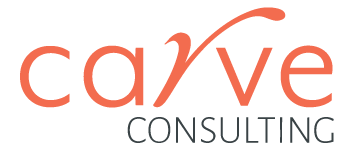Culture Review.
If your engagement scores are consistently low, experiencing high turnover or noticing broad ranging toxic or dysfunctional behaviours, your organisation may benefit from a Culture Review.
The Culture Review identifies the embedded attitudes, behaviours and perceptions that may be helping and hindering your organisation’s culture and productivity. The Culture Review Report includes insights and full recommendations to move towards a productive and positive culture.
How we can help
We have worked with organisations across a broad range of industries including Arts, Media, Finance, Logistics, and Technology.
Whether creating shifts in systemic behaviours to ensure psychosocial safety or identifying essential skill gaps, organisations and teams have seen reduced psychosocial risk, improved team engagement, collaboration and a productive focus on shared outcomes.
Based on experience, there is a recommended structured process for a culture review, although this can be customised to fit the requirements of the team or organisation.

Case Study: Culture Review for an iconic arts organisation challenged by disruptive behaviours
The Australian arm of an international arts organisation was experiencing a situation where its internal culture was being effected by disruptive behaviours. Despite having an external brand that was trusted globally, internally, it grappled with cultural discrepancies that threatened its core values and sustainability. This case study outlines the steps taken to identify and address the cultural challenges.
Situation
With new local and global leadership, hailing from outside the conventional sector, discrepancies in the organisation’s internal conduct became glaringly evident. The organisation faced a range of challenges including:
- Due to economic and society changes, the organisation was under pressure to evolve and and be sustainable into the future, but the internal behaviours were not conducive to designing or executing meaningful change.
- The culture suffered from long-standing industry accepted norms and lack of accountability for detrimental behaviours.
- Issues such as the formation of cliques, public criticism of colleagues, and exclusionary behaviours became apparent.
- A prevailing silent bystander attitude, where either witnesses or direct recipients refrained from addressing it.
- Frequent leadership changes over a period of time resulted in disjointed transformation efforts.
- Attempts at structural change were met internally with resistance, harming the organisation’s reputation, increasing turnover, and blocking sustainable change.
Process
To address these issues, a detailed culture review was initiated:
- A People at Work survey was conducted to identify psychosocial risks and hazards that were present in the current environment.
- Individual interviews were conducted with employees aimed to capture sentiments, behavioural norms, and capabilities, as well as to determine the root causes of disruptive behaviours.
- A comprehensive report was then compiled and presented, offering a six-month action plan focused on four key pillars:
- Psychosocial risk and psychological safety
- Distributed and situational leadership
- Culture building
- Skills development
Outcomes
The review revealed that prolonged systemic behaviours and previous leadership decisions had led to a culture of blame, self-protection and lack of productivity. This culture had elements where problematic behaviours went unchecked, resulting in an environment of apprehension. Potential risks, in line with recent SafeWork legislation concerning psychosocial hazards were identified. The culture review report provided actionable recommendations:
- A programme was rolled out to enhance leadership capability and raise awareness of psychosocial hazards in relation to the organisation’s code of conduct.
- By bringing shared understanding of what a psychologically safe culture feels and sounds like, the team was able to identify the behaviours they would accept and what behaviours were detrimental to the culture.
- Embracing the principles of psychological safety they agreed on an approach to support coworkers if they noticed negative behaviours.
- After years of little investment in development and culture, the team were opened to the possibilities of how going to work could be different, developing their capability and refocusing energy on developing the organisation.
Conclusion
A culture review can be an indispensable tool when confronted with systemic avoidant behaviours and poor employee engagement. Such behaviours, manifested through high turnover, an uptick in formal complaints, and a surge in stress-related absences, may undermine investment in programs and initiatives.
Despite the initial hesitance among this organisation’s team members to share personal experiences and views, engagement in the culture review remained notably high. Through consistent reassurance and a relentless emphasis on the confidentiality of the process, we were able to glean candid and invaluable insights from the team.
However, it’s important to acknowledge that change, especially of this magnitude, is a gradual process. Numerous elements can thwart its success. Setting clear expectations, establishing realistic timeframes, and ensuring holistic buy-in from all stakeholders is pivotal for the efficacy of such a review.
